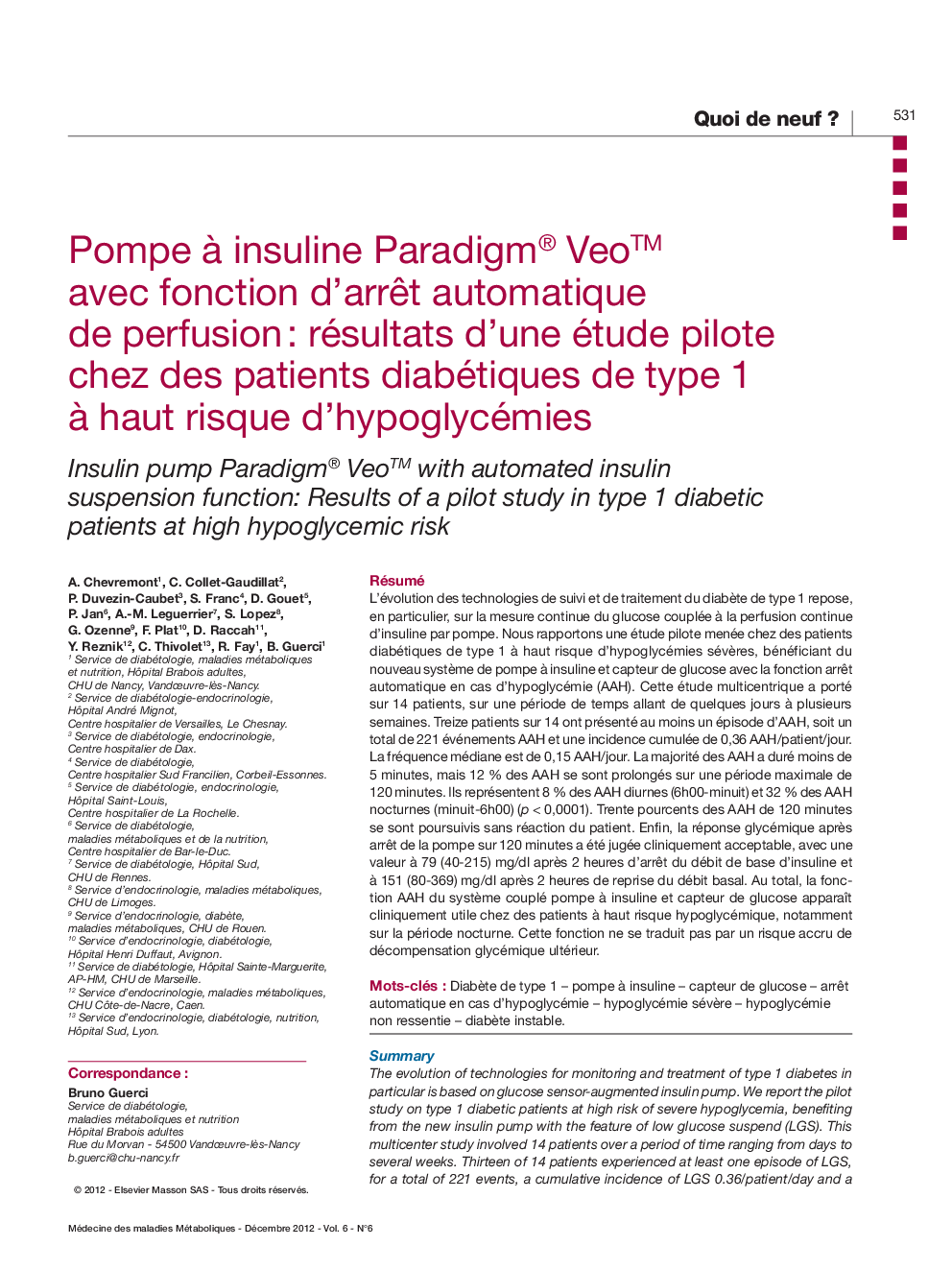| Article ID | Journal | Published Year | Pages | File Type |
|---|---|---|---|---|
| 3275089 | Médecine des Maladies Métaboliques | 2012 | 8 Pages |
Abstract
The evolution of technologies for monitoring and treatment of type 1 diabetes in particular is based on glucose sensor-augmented insulin pump. We report the pilot study on type 1 diabetic patients at high risk of severe hypoglycemia, benefiting from the new insulin pump with the feature of low glucose suspend (LGS). This multicenter study involved 14 patients over a period of time ranging from days to several weeks. Thirteen of 14 patients experienced at least one episode of LGS, for a total of 221 events, a cumulative incidence of LGS 0.36/patient/day and a median frequency of 0.15 LGS/day. The majority of LGS lasted less than 5 minutes, but 12% of LGS have extended over a maximum of 120 minutes. They represent 8% of LGS from diurnal period (06:00-00:00) and 32% of LGS from nocturnal period (00:00-06:00) (P<0.0001). Thirty percent of LGS of 120 minutes were not associated with patient's action. Finally, the glycemic response after stopping the pump of 120 minutes was considered clinically acceptable with a value of 79 (40-215)Â mg/dl 2 hours after stopping the basal insulin rate and 151 (80-369)Â mg/dl 2 hours after restarting the basal rate. In conclusion, coupling LGS insulin pump and glucose sensor appears clinically useful in patients at high risk of hypoglycemia, particularly during night time. This function does not lead to an increased risk of subsequent glycemic deterioration.
Keywords
Related Topics
Health Sciences
Medicine and Dentistry
Endocrinology, Diabetes and Metabolism
Authors
A. Chevremont, C. Collet-Gaudillat, P. Duvezin-Caubet, S. Franc, D. Gouet, P. Jan, A.-M. Leguerrier, S. Lopez, G. Ozenne, F. Plat, D. Raccah, Y. Reznik, C. Thivolet, R. Fay, B. Guerci,
